
Wine Culture and Information since 2002 - Volume 22
 Wine Culture and Information since 2002 - Volume 22 |
|
Comparing Pinot GrisFine grape to which was assigned the task of relaunching in the 1980s the fashion of white wines in Italy, Pinot Gris is still today one of the main protagonists of wine making |
|
In the beginning of the 1980s, in Italy, when a wine was about to be ordered at the restaurant, as well as when it was purchased in other occasions, most of the times was a Pinot Gris, or Pinot Grigio, like Italians call it. To this grape was in fact assigned the task or relaunching and reawaken the fashion of white wines, a phenomenon lasted for many years and which strongly changed the preferences of Italians, who were mainly oriented to red wines. From the North-Eastern areas of Italy, this fashion began to spread everywhere in the country, and also in other regions they started planting Pinot Gris with the explicit goal of taking advantage of the commercial opportunity offered at that time. The golden age of Pinot Gris lasted many years, until in Italy was finally started a wine making revolution with an increasing quantity of quality wines being produced. The availability of these new quality wines, caused a progressive loss of interest for Pinot Gris - as well as white wines in general - although keeping, even today, a large number of supporters. The origins of Pinot Gris are today very clear as it is considered a genetic mutation of Pinot Noir, the famous grape protagonist of the elegant red wines from Burgundy. Pinot Gris can be recognized for the particular color of the skin of its berries, a color varying from blue-gray to bronze-pink, variation which can also be seen in the berries of the same cluster. In fact, it is the skin to characterize the wines produced with Pinot Gris and to offer wine makers two distinct methods of interpreting this grape. Sometimes the must of Pinot Gris is allowed to macerate with the skins, therefore giving the wine its typical coppery color, a technique rarely used today, however giving the wine an interesting aromatic profile as well as a fuller body. Most of dry Pinot Gris is in fact vinified without the maceration of the skins on the must - or with a short maceration of few hours at a low temperature in order not to extract color but only aromas - giving the wine the typical color of whites.
|
|
Pinot Gris is a grape capable of making very interesting wines and with a very elegant and refined aromatic profile. The production technique mainly used today provides for the fermentation and aging in inert containers, most of the cases steel tanks, and very rarely are being used casks and barriques. Pinot Gris is very appreciated and common in Alsace, where it is still today produced by allowing the skins to macerate on the must, therefore giving the wine its typical coppery color. The same technique is still used in Germany, where the grape is known as Rülander, a name sometimes used in the wines produced in South Tirol. In Italy Pinot Gris - here known as Pinot Grigio - is mainly cultivated in Friuli Venezia Giulia and in Trentino Alto Adige, however this grape is also cultivated in Veneto and, marginally, in other regions where it is usually used together with other grapes.
The goal of our comparative tasting is the study of organoleptic qualities of Pinot Gris, by examining three wines produced in Friuli Venezia Giulia, the region in which this grape is very common. The wines which will examine are produced with different vinification techniques, including the fermentation and maceration in wood containers. The first wine of our comparative tasting is Castello di Spessa's Collio Pinot Grigio, completely fermented and aged in steel tanks. Also the second wine is produced in the same area, also in this case fermented and aged in steel tanks for about 8 months: Villa Russiz's Collio Pinot Grigio. The third wine of the comparative tasting is completely different from the previous ones, both in the vinification technique as well as the area of origin: Friuli Isonzo Pinot Grigio Gris of Lis Neris. This is in fact the only wine of the three to be fermented and aged in cask for 10 months. The first two wines will be served at a temperature of 10°C (50°F), whereas for the third wine will be used a temperature of 12°C (54°F). For the tasting we will use, as usual, three ISO glasses.
|
||||||||
|
The aspect of dry wines produced with Pinot Gris depends on the vinification technique, in particular on the choice on macerating the skins on the must or to follow the usual white vinification method. In white vinification technique is sometimes allowed the maceration of skins in the must at low temperature in order to extract aromatic qualities of the grape. The same technique is used with Pinot Gris and, at higher temperatures, allows the extraction of the color from its skins as well. This technique, considered in many areas as traditional, besides enriching the must with aromas, also gives the wine a coppery hue, as the skins of Pinot Gris have a color from blue-gray to pink-bronze. In Italy this technique is sometimes used in South Tirol, whereas is it avoided in all the other Italian areas. The color of Pinot Gris goes from greenish yellow to straw yellow, sometimes showing a golden yellow hue in its youth. Golden yellow is the color characterizing Pinot Gris after few years of aging in bottle, despite it is best to drink these wines during their first years of life. We will begin the phase of the appearance analysis of our comparative tasting from Castello di Spessa's Collio Pinot Grigio. By holding the glass tilted on a white surface, we will evaluate the color of this first wine by observing the base of the glass. It will be observed a pale golden yellow color, whereas observing the edge of the liquid mass, towards the opening of the glass, the nuance will show a straw yellow color. Let's now pass to the evaluation of the second wine - Villa Russiz's Collio Pinot Grigio - made in the same area of the previous wine and aged in steel tanks. This Pinot Gris shows a brilliant greenish yellow color - paler than the previous one - and the same color can be observed in nuances, to the edge of the liquid mass. The third wine of our comparative tasting, Friuli Isonzo Pinot Grigio Gris of Lis Neris, is the only one to be fermented and aged in cask. The color of this wine is pale straw yellow with greenish yellow nuances.
|
|
The aromas of dry wines produced with Pinot Gris belongs to the world of fruits and flowers, always elegant and refined, a characteristic which has always attracted both wine lovers and wine makers. Thanks to these qualities, Pinot Gris is used together with other grapes, giving wines the elegance and finesse of its aromas. Among the main olfactory qualities of Pinot Gris, there are many aromas belonging to fruits, including tropical fruits. Among the main fruit aromas associated to Pinot Gris are found apple, pear, pineapple, peach, plum, lemon, banana, lychee, apricot and grapefruit. In Pinot Gris is also possible to find aromas of dried fruit, in particular almond and hazelnut. The world of flowers of Pinot Gris is pretty rich, in which can be mainly found hawthorn, broom and acacia, sometimes also jasmine and elder. In Pinot Gris can sometimes be perceived mineral aromas as well as vegetal aromas, such as hay and tomato leaf. The olfactory analysis of our comparative tasting will start from Castello di Spessa's Collio Pinot Grigio. By holding the glass in vertical position and without swirling, we will proceed with the first smell, in order to evaluate opening aromas, lighter and therefore capable of volatilizing with small quantities of oxygen. From the glass will emerge intense, clean and pleasing aromas of apple, plum and hawthorn, three aromatic qualities found in many wines produced with Pinot Gris. After having swirled the glass, in order to allow the volatilization of heavier aromatic substances because of the effects of a higher quantity of oxygen, we will proceed with a second smell which will complete the olfactory profile of this second wine. From the glass will be appreciated aromas of pineapple, grapefruit and pear which will be followed by flowery aromas of acacia and broom. A very balanced and clean nose, where the aromas are well perceptible and in good balance. Let's now pass to the evaluation of the second wine - Villa Russiz's Collio Pinot Grigio - produced in the same area of the previous wine. Opening aromas, by holding the glass in vertical position and without swirling, will allow the perception of pear, apple and pineapple: a more tropical nose than the previous wine and, also in this case, pretty typical for this grape. After having swirled the glass, let's now proceed with the second smell which will allow the appreciation of the aromas of banana, lychee, grapefruit and hazelnut, completed by flowery aromas of hawthorn and broom. The opening aromas of the third wine - Friuli Isonzo Pinot Grigio Gris of Lis Neris - will be characterized by aromas of apple, pineapple and toasted wood, a clear sign of the aging in wood: this is in fact the only wine of the three to be aged in cask. After having swirled the glass, we will proceed with the second smell which will allow the perception of the aromas of pear, plum and hazelnut, followed by flowery sensations of hawthorn, jasmine and elder, as well as pleasing hints of mineral.
|
||||
|
Also according to a gustatory point of view, wines produced with Pinot Gris offer to the taster an interesting sensorial experience. Two are the main qualities of Pinot Gris: good body and appreciable roundness. These two characteristics are frequently appreciated by wine makers, not only for the production of mono varietal wines, but also for increasing body and roundness of wines produced with other grapes and which could be too much light and excessively acid. Of course, Pinot Gris also has crispness, a quality which - besides being pretty evident in its wines - it is necessary in order to reach gustatory balance. The structure in Pinot Gris is also increased in case the wine was produced according to the tradition method which makes use of maceration of skins in the must. In this case, besides getting its characteristic coppery color, wines produced with Pinot Gris get a very personal character, different from the result which can be obtained with the classic white vinification method. The first wine of which we will examine taste is Castello di Spessa's Collio Pinot Grigio, completely fermented and aged in steel tanks. The attack of this Pinot Gris shows since the first sip the typical characteristics of this grape: a good crispness, balanced by a pleasing roundness and a good body. Then it follows the tactile effects of alcohol in order to reach balance. Let's now pass to the second wine of our comparative tasting, Villa Russiz's Collio Pinot Grigio, also in this case aged in steel tanks. The attack of this wine is pleasingly crisp, in which can be clearly perceived both roundness and body, also in this case well balanced by the effects of alcohol. The last wine of our comparative tasting, Friuli Isonzo Pinot Grigio Gris of Lis Neris, will give Pinot Gris a new dimension, thanks to the aging in cask. The attack of this third wine is in fact characterized by a fuller body, although both crispness and the typical roundness of Pinot Gris will be evident and well balanced by alcohol.
|
|
Two of the most interesting aspects of Pinot Gris are represented by the structure and roundness, two qualities which continues to be perceived also after the wine has been swallowed. The finish of Castello di Spessa's Collio Pinot Grigio is persistent with pleasing and clean flavors of plum and apple, two aromatic qualities typical in this grape. Also the finish of the second wine - Villa Russiz's Collio Pinot Grigio - is persistent while leaving in the mouth pleasing and clean tropical flavors in which it is possible to recognize pineapple, lychee and pear. The finish of the third wine, Friuli Isonzo Pinot Grigio Gris of Lis Neris, is persistent and leaving in the mouth, besides a greater thickness because of the aging in cask, pleasing flavors of plum, apple and pear. It should be noticed the excellent correspondence to the nose - an undeniable and important quality in every wine - as well as the pleasing roundness, found in all the three wines and typical in Pinot Gris.
|
Wines of the Month |
|
|
|
Score legend Prices are to be considered as indicative. Prices may vary according to the country or the shop where wines are bought |
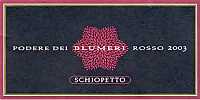
|
|
Blumeri Rosso 2003 |
|
| Schiopetto (Friuli Venezia Giulia, Italy) | |
| Grapes: Merlot (70%), Refosco dal Peduncolo Rosso (25%), Cabernet Sauvignon (5%) | |
| Price: € 24.00 | Score: |
| Blumeri Rosso shows a deep ruby red color and nuances of ruby red, little transparency. The nose reveals intense, clean, pleasing, refined and elegant aromas that start with hints of black cherry, plum and black currant followed by aromas of violet, blackberry, vanilla, tobacco, coffee, chocolate, licorice, eucalyptus, pink pepper and mace. The mouth has good correspondence to the nose, a tannic attack and however balanced by alcohol, full body, intense flavors. The finish is persistent with flavors of black cherry, plum and black currant. A well made wine. Blumeri Rosso ages in cask and in barrique for about 15 months. | |
| Food Match: Game, Roasted meat, Stewed and braised meat, Hard cheese | |

|
|
Mario Schiopetto Bianco 2006 |
|
| Schiopetto (Friuli Venezia Giulia, Italy) | |
| Grapes: Chardonnay (50%), Tocai Friulano (50%) | |
| Price: € 24.00 | Score: |
| This wine shows a pale straw yellow color and nuances of greenish yellow, very transparent. The nose reveals intense, clean, pleasing, refined and elegant aromas which start with hints of peach, pear and banana followed by aromas of pineapple, citrus fruits, acacia, hawthorn, apple, broom, almond, honey, gooseberry, elder and hints of vanilla. The mouth has excellent correspondence to the nose, a crisp attack and however balanced by alcohol, good body, intense flavors, agreeable. The finish is very persistent with long flavors of apple, peach, banana and almond. A well made wine. Part of this wine ages in cask. | |
| Food Match: Pasta with fish, Roasted fish, Roasted white meat, Broiled fish | |
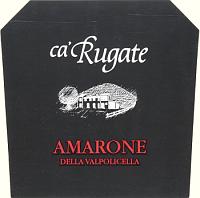
|
|
Amarone della Valpolicella 2004 |
|
| Ca' Rugate (Veneto, Italy) | |
| Grapes: Corvina (40%), Rondinella (30%), Corvinone (30%) | |
| Price: € 40.50 | Score: |
| This Amarone della Valpolicella shows a brilliant ruby red color and nuances of garnet red, moderate transparency. The nose denotes intense, clean, pleasing, refined and elegant aromas which start with hints of plum, blackberry and black cherry followed by aromas of violet, raspberry, vanilla, tobacco, pink pepper, chocolate, mace and menthol. The mouth has good correspondence to the nose, a tannic attack and however balanced by alcohol, full body, intense flavors. The finish is persistent with flavors of blackberry, black cherry and plum. A well made wine. Amarone della Valpolicella ages in cask for about 30 months. | |
| Food Match: Game, Roasted meat, Braised and stewed meat, Hard cheese | |
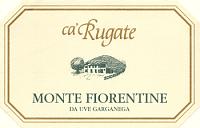
|
|
Soave Classico Monte Fiorentine 2006 |
|
| Ca' Rugate (Veneto, Italy) | |
| Grapes: Garganega | |
| Price: € 16.20 | Score: |
| Soave Classico Monte Fiorentine shows a pale straw yellow color and nuances of greenish yellow, very transparent. The nose reveals intense, clean, pleasing and refined aromas that start with hints of apple, grapefruit and plum followed by aromas of hawthorn, pineapple, almond, pear, elder, chamomile, tangerine and hints of mineral. The mouth has good correspondence to the nose, a crisp attack and however balanced by alcohol, good body, intense flavors, agreeable. The finish is persistent with flavors of apple, plum, pineapple and almond. A well made wine. Soave Classico Monte Fiorentine ages in steel tanks. | |
| Food Match: Fried fish, Pasta and risotto with fish and vegetables, Sauteed fish and crustaceans | |
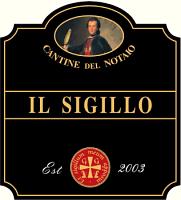
|
|
Aglianico del Vulture Il Sigillo 2003 |
|
| Cantine del Notaio (Basilicata, Italy) | |
| Grapes: Aglianico | |
| Price: € 36.00 | Score: |
| Aglianico del Vulture Il Sigillo shows an intense ruby red color and nuances of garnet red, little transparency. The nose denotes intense, clean, pleasing, refined and elegant aromas which start with hints of blackberry, plum and black cherry followed by aromas of violet, blueberry, vanilla, tobacco, chocolate, cinnamon, pink pepper, mace and menthol. The mouth has good correspondence to the nose, a tannic attack and however balanced by alcohol, full body, intense flavors, agreeable roundness. The finish is persistent with flavors of blackberry, plum and black cherry. A well made wine. Aglianico del Vulture Il Sigillo ages for 24 months in barrique. | |
| Food Match: Game, Stewed and braised meat, Roasted meat, Hard cheese | |

|
|
L'Autentica 2005 |
|
| Cantine del Notaio (Basilicata, Italy) | |
| Grapes: Moscato Bianco (70%), Malvasia Bianca (30%) | |
| Price: € 29.00 - 500ml | Score: |
| L'Autentica shows a brilliant amber yellow color and nuances of amber yellow, transparent. The nose reveals intense, clean, pleasing, refined and elegant aromas which start with hints of raisin, lychee and dried apricot followed by aromas of ripe banana, lavender, candied fruits, date, apple, pear, orange marmalade, honey, almond and vanilla. The mouth has excellent correspondence to the nose, a sweet attack and pleasing roundness, however balanced by alcohol, good body, intense flavors, agreeable crispness. The finish is very persistent with long flavors of raisin, lychee, dried apricot and almond. A well made wine. L'Autentica ferments and ages for 14 months in cask followed by 4 months of aging in bottle. | |
| Food Match: Hard and piquant cheese, Fruit tarts, Confectionery | |
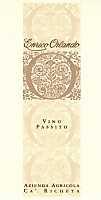
|
|
Vino Passito 2003 |
|
| Ca' Richeta (Piedmont, Italy) | |
| Grapes: Moscato Bianco, Sauvignon Blanc, Sémillon | |
| Price: € 20.00 - 375ml | Score: |
| This wine shows a brilliant amber yellow color and nuances of amber yellow, transparent. The nose reveals intense, clean, pleasing, refined and elegant aromas that start with hints of raisin, dried fig and almond followed by aromas of caramel, ripe banana, quince jam, candied fruits, licorice, honey, citrus fruit peel and vanilla. The mouth has good correspondence to the nose, a sweet and smooth attack, however balanced by alcohol, good body, intense flavors, agreeable. The finish is persistent with flavors of raisin, dried fig and licorice. A well made wine. This sweet wine ages for about 24 months in cask. | |
| Food Match: Hard and piquant cheese, Dried fruit desserts | |
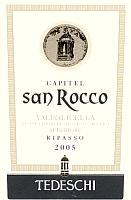
|
|
Valpolicella Superiore Ripasso Capitel San Rocco 2005 |
|
| Tedeschi (Veneto, Italy) | |
| Grapes: Corvina (30%), Corvinone (30%), Rondinella (30%), Molinara, Rossignola, Oseleta, Negrara, Dindarella (10%) | |
| Price: € 12.00 | Score: |
| Valpolicella Superiore Ripasso Capitel San Rocco shows an intense ruby red color and nuances of garnet red, moderate transparency. The nose reveals intense, clean, pleasing and refined aromas that start with hints of black cherry, blackberry and plum followed by aromas of blueberry, violet, vanilla, tobacco, licorice, cocoa and menthol. The mouth has good correspondence to the nose, a tannic attack and however balanced by alcohol, good body, intense flavors. The finish is persistent with flavors of blackberry, black cherry and plum. Valpolicella Superiore Ripasso Capitel San Rocco ages in cask for 2 years followed by 6 months of aging in bottle. | |
| Food Match: Roasted meat, Braised and stewed meat with mushrooms, Hard cheese | |
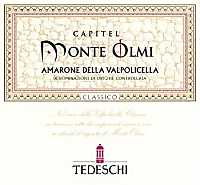
|
|
Amarone della Valpolicella Classico Capitel Monte Olmi 2003 |
|
| Tedeschi (Veneto, Italy) | |
| Grapes: Corvina (30%), Corvinone (30%), Rondinella (30%), Molinara, Rossignola, Oseleta, Negrara, Dindarella, Croatina, Forselina (10%) | |
| Price: € 47.50 | Score: |
| Amarone della Valpolicella Classico Capitel Monte Olmi shows a deep ruby red color and nuances of ruby red, little transparency. The nose reveals intense, clean, pleasing, refined and elegant aromas that start with hints of plum, blackberry and black cherry followed by aromas of violet, blueberry, tobacco, vanilla, chocolate, licorice, cinnamon, pink pepper, mace and menthol. The mouth has good correspondence to the nose, a tannic attack and however balanced by alcohol, full body, intense flavors, agreeable roundness. The finish is persistent with flavors of plum, blackberry and black cherry. A well made wine. Amarone della Valpolicella Classico Capitel Monte Olmi ages for about 3 years in cask followed by 6 months of aging in bottle. | |
| Food Match: Game, Braised and stewed meat, Roasted meat, Hard cheese | |
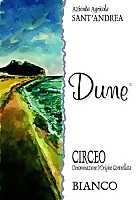
|
|
Circeo Bianco Dune 2005 |
|
| Sant'Andrea (Latium, Italy) | |
| Grapes: Malvasia Puntinata (40%), Trebbiano Toscano (60%) | |
| Price: € 8.00 | Score: |
| This wine shows an intense golden yellow color and nuances of golden yellow, very transparent. The nose reveals intense, clean, pleasing and refined aromas which start with hints of apple, pineapple and citrus fruits followed by aromas of hawthorn, chamomile, ripe peach, pear and medlar. The mouth has good correspondence to the nose, a crisp attack and however balanced by alcohol, good body, intense flavors, agreeable. The finish is persistent with flavors of apple, plum and pineapple. Circeo Bianco Dune ages in barrique for 6 months followed by 3 months of aging in bottle. | |
| Food Match: Pasta and risotto with fish and crustaceans, Sauteed white meat, Mushroom soups, Broiled fish | |
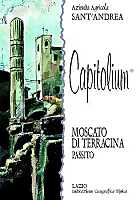
|
|
Capitolum 2005 |
|
| Sant'Andrea (Latium, Italy) | |
| Grapes: Moscato di Terracina | |
| Price: € 11.00 - 500ml | Score: |
| Capitolum shows a brilliant amber yellow color and nuances of amber yellow, transparent. The nose denotes intense, clean, pleasing and refined aromas that start with hints of raisin, dried apricot and dried fig followed by aromas of candied fruits, date, peach jam, lychee, almond, honey and citrus fruit peel. The mouth has good correspondence to the nose, a sweet attack and pleasing roundness, however balanced by alcohol, good body, intense flavors. The finish is persistent with flavors of raisin, dried apricot and dried fig. A small part of Capitolum ages in cask for 6 months. | |
| Food Match: Dried fruit desserts, Hard cheese | |
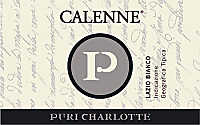
|
|
Calenne 2006 |
|
| Charlotte Puri (Latium, Italy) | |
| Grapes: Procanico (60%), Chardonnay (20%), Rossetto (15%), Sauvignon Blanc (5%) | |
| Price: € 10.00 | Score: |
| Calenne shows a brilliant straw yellow color and nuances of greenish yellow, very transparent. The nose reveals intense, clean, pleasing and refined aromas which start with hints of apple, pineapple and plum followed by aromas of jasmine, hawthorn, grapefruit, pear and hints of mineral. The mouth has good correspondence to the nose, a crisp attack and however balanced by alcohol, good body, intense flavors, agreeable. The finish is persistent with flavors of apple, plum and pineapple. Calenne ages in steel tanks. | |
| Food Match: Fried fish, Pasta and risotto with fish and vegetables, Sauteed fish | |
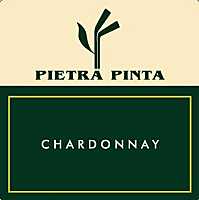
|
|
Chardonnay 2006 |
|
| Pietra Pinta (Latium, Italy) | |
| Grapes: Chardonnay | |
| Price: € 6.50 | Score: |
| This Chardonnay shows an intense golden yellow color and nuances of straw yellow, very transparent. The nose denotes intense, clean and pleasing aromas which start with hints of apple, plum and hawthorn followed by aromas of banana, pineapple and broom. The mouth has good correspondence to the nose, a crisp attack and however balanced by alcohol, good body, intense flavors. The finish is pretty persistent with flavors of apple and plum. Part of this wine ages in barrique. | |
| Food Match: Pasta and risotto with fish and vegetables, Broiled crustaceans, Sauteed meat | |
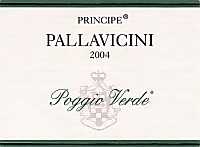
|
|
Frascati Superiore Poggio Verde 2006 |
|
| Principe Pallavicini (Latium, Italy) | |
| Grapes: Malvasia di Candia (50%), Malvasia del Lazio (20%), Trebbiano Toscano (10%), Greco, Grechetto (20%) | |
| Price: € 7.50 | Score: |
| This Frascati shows an intense greenish yellow color and nuances of greenish yellow, very transparent. The nose denotes intense, clean and pleasing aromas that start with hints of apple, citrus fruits and almond followed by aromas of pineapple, hawthorn and broom. The mouth has good correspondence to the nose, a crisp attack and however balanced by alcohol, good body, intense flavors. The finish is pretty persistent with flavors of apple and citrus fruits. Frascati Superiore Poggio Verde ages in steel tanks. | |
| Food Match: Dairy products, Crustacean appetizers, Risotto with fish and vegetables | |
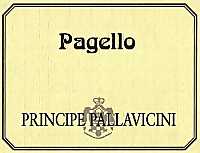
|
|
Pagello 2006 |
|
| Principe Pallavicini (Latium, Italy) | |
| Grapes: Greco Bianco (50%), Grechetto (50%) | |
| Price: € 8.00 | Score: |
| Pagello shows a pale straw yellow color and nuances of greenish yellow, very transparent. The nose denotes intense, clean and pleasing aromas that start with hints of apple, plum and anise followed by aromas of hazelnut, hawthorn and pear. The mouth has good correspondence to the nose, a crisp attack and however balanced by alcohol, good body, intense flavors. The finish is persistent with flavors of apple and plum. Pagello partially ferments in barrique. | |
| Food Match: Fish and crustacean appetizers, Pasta and risotto with fish and vegetables | |
|
||||||||
|
DiWineTaste Polls
|
| |||||||
Privacy Policy | |||||||


| Copyright © 2002-2024 Antonello Biancalana, DiWineTaste - All rights reserved |
| All rights reserved under international copyright conventions. No part of this publication and of this WEB site may be
reproduced or utilized in any form or by any means, electronic or mechanical, without permission in writing from DiWineTaste. |